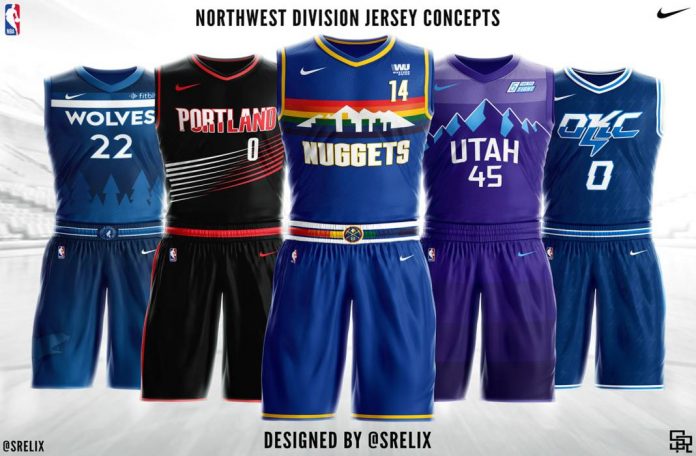The first three parts of the series can be found here.
It’s time to put together the All-Quietly Doing Well Team: Northwest Division Edition.
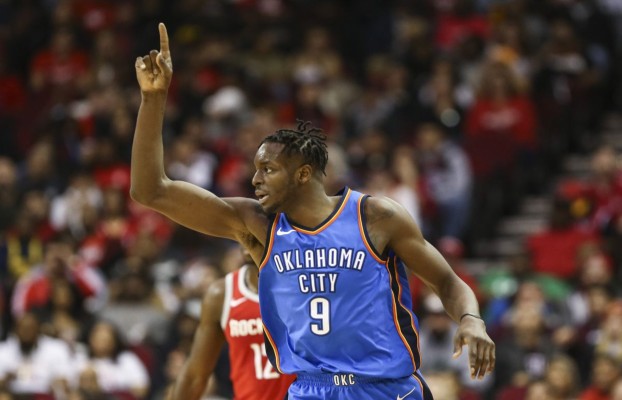
Oklahoma City Thunder: Jerami Grant
The Oklahoma City Thunder are shaping up to be a legitimate title contender with the addition of Dennis Schroder and the re-signing of Paul George.
Their biggest offseason gamble may have been on young forward Jerami Grant, and it may be one of Sam Presti’s greatest moves yet.
When the Thunder re-signed Jerami Grant to a three-year, $27 million contract after re-signing Paul George to a max contract when the Thunder were already in salary cap *h-e-double-hockey-sticks*, the move was puzzling. Grant was coming off a season where he shot 29.1% from beyond the arc and a postseason where he shot 25% from the same distance.
His game was approaching being labeled “one-dimensional.” Then this season happened.
At the time of this writing, Jerami Grant is averaging career-highs in nearly every major statistical category:
PPG: 11.6 (up from 7.8 career average)
RPG: 4.9 (up from 3.7 career average)
APG: 1.2 (up from 1.1 career average – still an improvement, albeit marginal!)
3P%: 38.7 (up from 31.2 career average)
FT%: 67.6 (up from 64.3 career average)
Grant may never get much national recognition, but he’s been exactly what the Thunder have needed and then some.
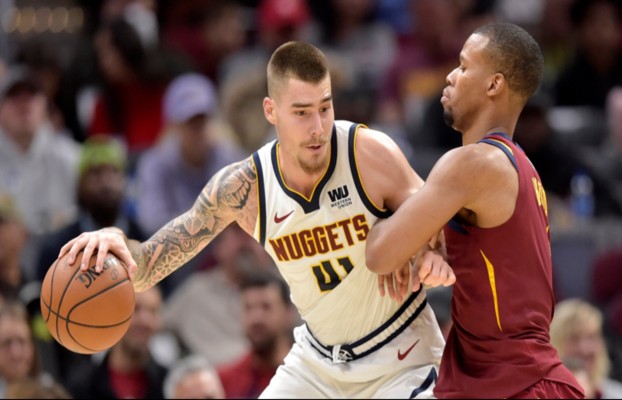
Denver Nuggets: Juancho Hernangomez
Besides having one of the best names in the NBA and being the far superior Hernangomez brother (sorry Willy), Juancho has been taking Denver’s offense to new heights in wake of injuries to some key contributors.
Paul Millsap is currently out with a broken toe, and Gary Harris will be out 3-4 weeks rehabbing a hip injury. That hasn’t stopped Hernangomez from averaging 10.0 PPG or shooting 45.3% from distance.
Over the past eight games, Hernangomez has scored in double-digits in seven of them, including two double-doubles; highlighted by his 17-point, 10-rebound performance against the Atlanta Hawks.
Hernangomez has been in and out of the starting lineup this season, but when he’s been starting, it’s been really good for he and the Denver Nuggets as a whole.
When starting this season, Hernangomez has averaged: 12.9 PPG, 7.1 RPG, 1.2 APG on .500/.469/.788 shooting splits.
Whoever the Nuggets have on their international scouting staff deserves a raise.
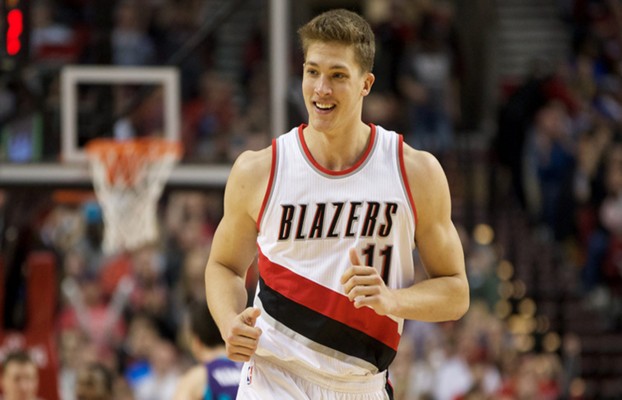
Portland Trail Blazers: Meyers Leonard
The Portland Trail Blazers may be the seventh-seed in the Western Conference, but they’re either banking on huge internal improvement or are about to make a blockbuster trade because their three-point shooting is atrocious.
Don’t let their 14th-ranked 3PT% fool you – of Portland’s starters, Damian Lillard is the best three-point shooter at 36.5%. Evan “Midrange” Turner is shooting 14.5% from three-point land, while Seth Curry is shooting 44.2% from distance; but is shooting 36.4% from the floor.
This team needs three-point shooting like Cleveland needed LeBron.
Luckily Portland has one player that could help with this problem, but as of late, he hasn’t shown that he can.
After emerging as a 3-and-no-D player in the 2015-16 season, the Trail Blazers extended Meyers Leonard in arguably one of the worst offseasons in NBA history for a team. Leonards’ past few seasons have been a thorn in Portland’s side.
Since shooting 37.7% from distance in the 2015-16, Leonard’s PPG average went from 8.4 that season to 5.4 the following and 3.4 last season. This season, Leonard is averaging 5.8 PPG and (technically) 50.0% from deep (only saying that because he averages 12.6 MPG). Advanced statistics may be the key for head coach Terry Stotts.
I’ve said before that I’m not a huge fan of per-36 numbers, but Leonard’s are hard to ignore.
Per-36, Leonard would be averaging 16.5 PPG, 12.5 RPG and 2.9 APG on .506/.500/.846 shooting splits. That would instantly make Leonard Portland’s third-leading scorer and assist man, as well as their leading three-point shooter and rebounder.
For a team that’s gone 4-6 over their last 10 and plays in the Western Conference, Leonard may be worth a look.
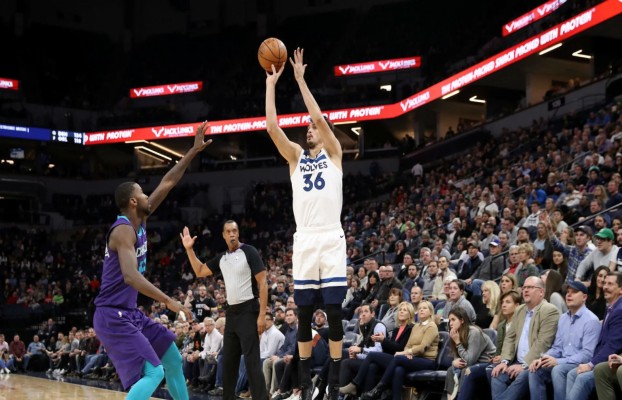
Minnesota Timberwolves: Dario Saric
(Is it cheating to include a player that’s only been with the team for 12 games? Asking for a friend).
When Jimmy Butler was traded to the 76ers, he made most of the headlines, while Robert Covington has made most of them since coming to the North Star State. Quietly (per usual), Saric has continued to make a solid impact on his new team.
Let’s get one thing clear: Saric hasn’t been and likely never will be an above-average defender. His value comes from his high basketball IQ, shooting touch, and passing ability. All three of those have been on display.
Since departing from the City of Brotherly Love, Saric is averaging 20.3 MPG because Tom Thibodeau doesn’t understand that he has more than five players on his team.
Sorry, let’s try that again.
Since departing from the City of Brotherly Love, Saric is averaging 20.3 MPG, 10.0 PPG, 5.3 RPG (including 1.6 ORPG), and 1.2 APG on .449/.378/.882 shooting splits. Saric’s shooting from the floor leaves something to be desired, but the latter two numbers suggest they’ll improve as the season goes on.
Saric unfortunately won’t start until Taj Gibson’s contract expires (or when he retires), but at least he’s getting minutes.
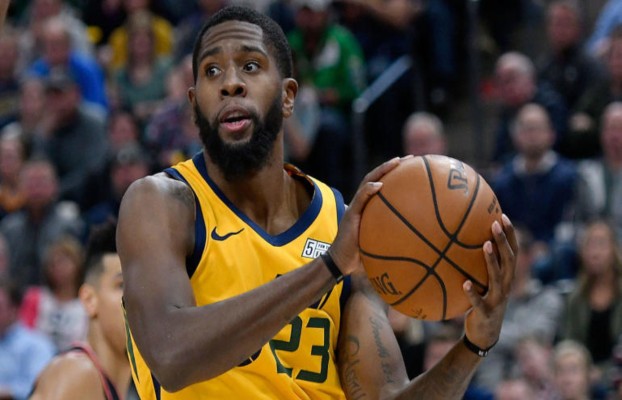
Utah Jazz: Royce O’Neale
Royce O’Neale burst onto the scene last season as an undrafted free agent from Baylor for a surprise playoff team in the Jazz, so it kind of made sense in a way. What hadn’t made sense is his inability to convert from anywhere but the rim and beyond the arc.
O’Neale has currently converted 30 of his 45 attempts at the rim and 14 of his 37 three-point attempts, good for a 47.1 FG% and 37.8 3P%. That’s not great but not terrible.
What is terrible is that O’Neale is shooting 20% on all of his field goals from 3 to <10 feet and 10 to <16 feet.
Now it’s hard to knock O’Neale’s game for poor shooting percentages on the most ineffective spots on the court, but after shooting 29.1% and 48.0% from those same distances last season, it’s a stark contrast.
O’Neale’s offensive rating for the season is 98, and his defensive rating is 108. On the surface, that seems bad. His 95 offensive rating at home is still bad, but his 101 defensive rating at home suggests the number is more skewed by his 101 offensive rating and 115 defensive rating on the road.
TL:DR: Royce O’Neale should turn it around, and he’s not to blame for Utah’s struggles this season.

